#Mission San Francisco Solano
Text
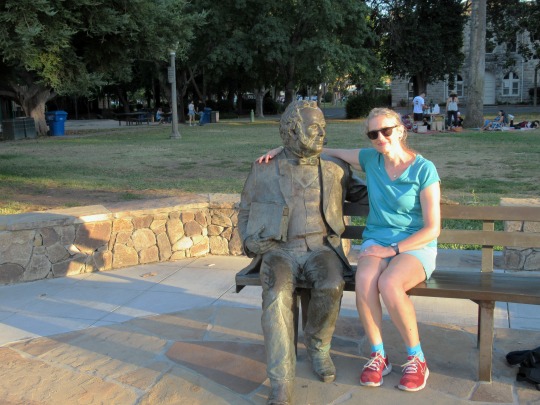

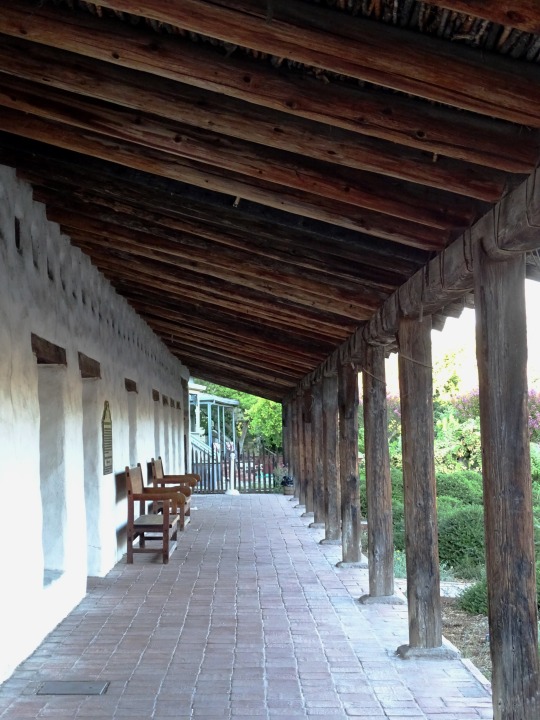
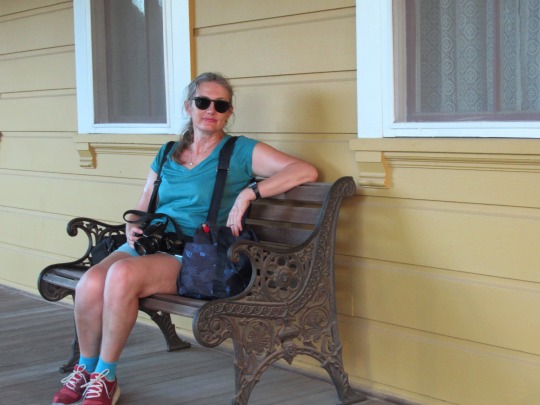
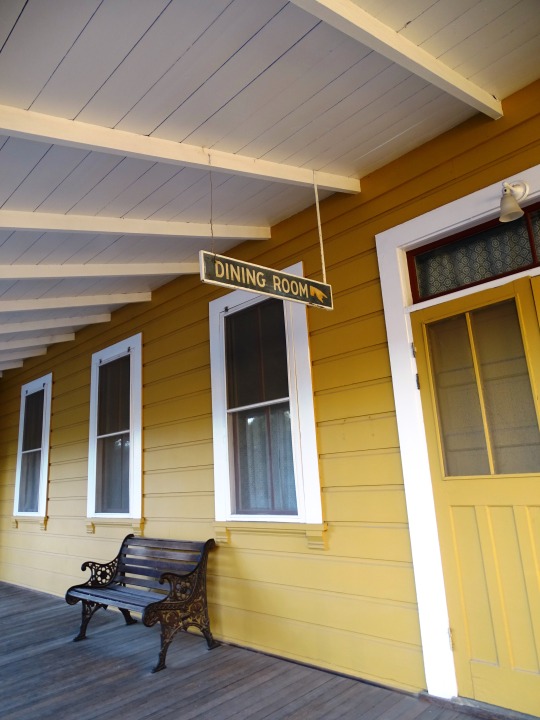
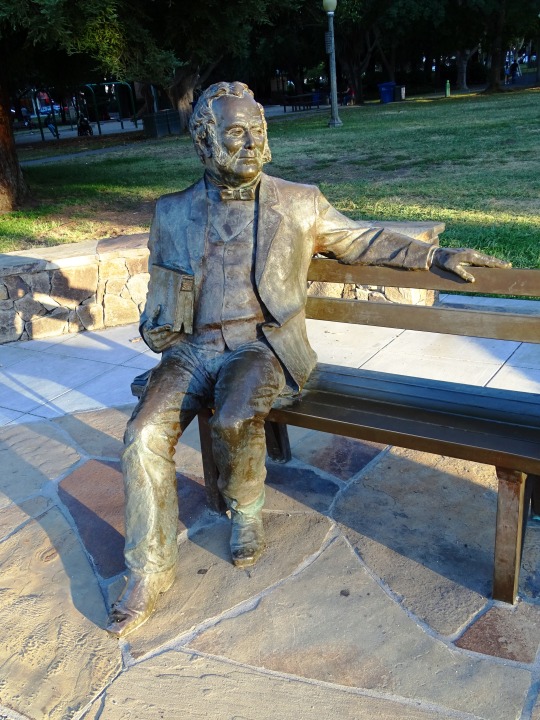


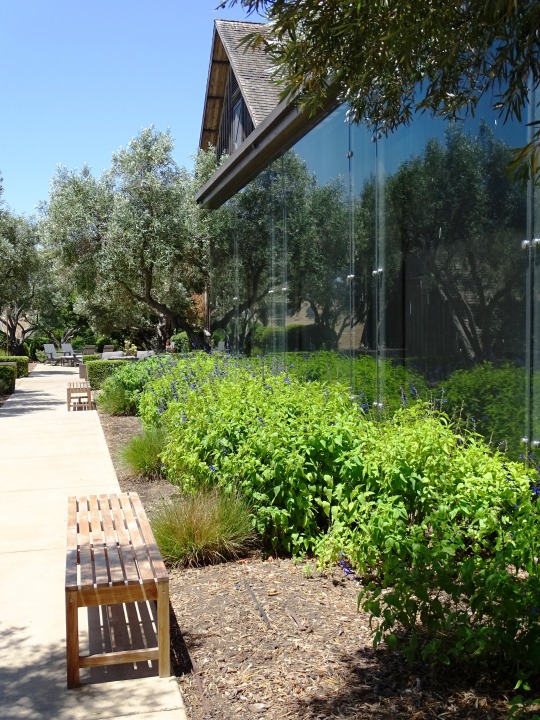
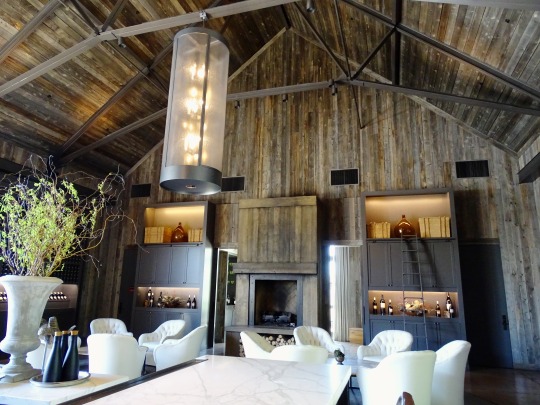
Benches/Chairs (No. 7)
Sonoma, CA (seven pics)
Domaine Carneros, CA
Ram's Gate Winery, CA (two pics)
#California#travel#original photography#vacation#tourist attraction#landmark#landscape#summer 2023#USA#flora#nature#cityscape#flowers#blooming#Adirondack chair#Napa Valley#architecture#Domaine Carneros#1240 Duhig Road#Napa#General Mariano Guadalupe Vallejo by Jim Callahan#Sonoma#Mission San Francisco Solano#Ram's Gate Winery#2022
9 notes
·
View notes
Text

Saint Junipero
In 1776, when the American Revolution was beginning in the east, another part of the future United States was being born in California. That year a gray-robed Franciscan founded Mission San Juan Capistrano, now famous for its annually returning swallows. San Juan was the seventh of nine missions established under the direction of this indomitable Spaniard.
Born on Spain’s island of Mallorca, Serra entered the Franciscan Order taking the name of Saint Francis’ childlike companion, Brother Juniper. Until he was 35, he spent most of his time in the classroom—first as a student of theology and then as a professor. He also became famous for his preaching. Suddenly he gave it all up and followed the yearning that had begun years before when he heard about the missionary work of Saint Francis Solano in South America. Junipero’s desire was to convert native peoples in the New World.
Arriving by ship at Vera Cruz, Mexico, he and a companion walked the 250 miles to Mexico City. On the way Junipero’s left leg became infected by an insect bite and would remain a cross—sometimes life-threatening—for the rest of his life. For 18 years, he worked in central Mexico and in the Baja Peninsula. He became president of the missions there.
Enter politics: the threat of a Russian invasion south from Alaska. Charles III of Spain ordered an expedition to beat Russia to the territory. So the last two conquistadors—one military, one spiritual—began their quest. José de Galvez persuaded Junipero to set out with him for present-day Monterey, California. The first mission founded after the 900-mile journey north was San Diego in 1769. That year a shortage of food almost canceled the expedition. Vowing to stay with the local people, Junipero and another friar began a novena in preparation for St. Joseph’s day, March 19, the scheduled day of departure. On that day, the relief ship arrived.
Other missions followed: Monterey/Carmel (1770); San Antonio and San Gabriel (1771); San Luís Obispo (1772); San Francisco and San Juan Capistrano (1776); Santa Clara (1777); San Buenaventura (1782). Twelve more were founded after Serra’s death.
Junipero made the long trip to Mexico City to settle great differences with the military commander. He arrived at the point of death. The outcome was substantially what Junipero sought: the famous “Regulation” protecting the Indians and the missions. It was the basis for the first significant legislation in California, a “Bill of Rights” for Native Americans.
Because the Native Americans were living a nonhuman life from the Spanish point of view, the friars were made their legal guardians. The Native Americans were kept at the mission after baptism lest they be corrupted in their former haunts—a move that has brought cries of “injustice” from some moderns.
Junipero’s missionary life was a long battle with cold and hunger, with unsympathetic military commanders and even with danger of death from non-Christian native peoples. Through it all his unquenchable zeal was fed by prayer each night, often from midnight till dawn. He baptized over 6,000 people and confirmed 5,000. His travels would have circled the globe. He brought the Native Americans not only the gift of faith but also a decent standard of living. He won their love, as witnessed especially by their grief at his death. He is buried at Mission San Carlo Borromeo, Carmel, and was beatified in 1988. Pope Francis canonized him in Washington, D.C., on September 23, 2015.
10 notes
·
View notes
Text
A Local Community Celebration takes work
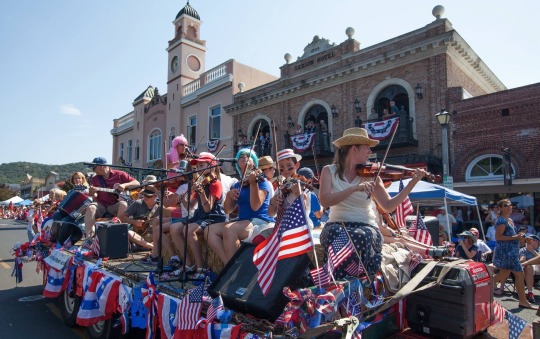
With the warmth and freedom of summer comes the annual celebration of independence, especially the 4th of July. This year for the town of Sonoma, the Fourth of July holds particular significance because it’s the 200th anniversary of the founding of the old Mission, San Francisco de Solano.
Whether people find it worthy of extra efforts of festivity or not is another matter. Yet pretty much everyone agrees that the 4th of July signifies the peak of summer and it’s an excuse to take some vacation time.
As the Sonoma Valley Sun reported.
“We roughly estimate that about 10,000, people visit Sonoma during the 4th of July weekend,” said Bob Norrbom, speaking on behalf of the Sonoma Volunteer Firefighters Association.
Since 2017, the SVFA has been coordinating the annual parade in addition to the fireworks show that lights up the skies above the plaza and surrounding vicinity as the sun sets.
As soon as dusk comes, at about 9:00 PM, the SVFA has everything ready to shoot off a spectacular pyrotechnic display to make for a memorable evening, and the conclusion of a full day of parade, activities, vendors and lots of family and community fun.
“As far back as I can remember, said Sonoma native Golly McGinty the community has always had a 4th of July celebration; fireworks and parade for over 62 years at least,” she exclaimed.
Before the SVFA began coordinating and organizing the parade, the Sonoma Community Center did the work until six years ago.
“The 4th of July event fills all the hotels said Norrbom and Sonoma gets visitors from all over, including places as far away as Australia, New Zealand, France, Italy & Spain.”
Yet, just as the Sonoma Index-Tribune reported back in April of this year, “we struggle financially to ensure that the fireworks show is of good quality,” said Norrbom. He noted that as the SVFA starts early to plan for the annual event, (sometimes just days after the 4th of July is over) “there is often a deficit of anywhere between 20 to 30,000 dollars in debt because costs are high and inflation has an impact.”
On average, the cost of a quality one-hour fireworks display that has the best pyrotechnics, according to Norrbom is about $70,000 dollars.
While the City of Sonoma and the tourism board of Sonoma County are very helpful in waiving fees and providing discounts, the SVFA still must pay CA State permit fees and charges.
Portable toilets, barricades, security, and other necessary things all are costs. And, “These too have increased,” said Norrbom.
The annual fireworks show is coordinated on a portion of land at General Vallejo’s home and estate which is part of the historical park owned/managed by the State of California. This is rented for a fee to the State Parks.
This launching spot which is situated off of Spain Street is an ideal vantage point so that most of Sonoma, especially within the radius of the historic plaza can view the fireworks clearly.
“We took over the responsibility of coordinating the parade from the SCC in an effort to raise funds to help pay for the fireworks show,” said Norrbom. “People and local organizations might complain about paying an entry fee to have their float or a marching band in the parade, but it helps us put on a good show,” said Norrbom.
“And, how can you have a really memorable 4th of July celebration without a fireworks show?” He added.
The SVFA works to help keep fees that vendors and local organizations pay reasonable by seeking the help of sponsors.
“We work throughout the year to obtain grants from foundations and ways to raise money through donations,” said Norrbom. The SVFA is a nonprofit 501, c-3 organization. “All donations are tax-deductible,” he added.
Norrbom is grateful for the sponsorship of Nugget Sonoma Market (among others) and for the help of local officials such as Susan Gorin.
Nugget manager at Sonoma Market Cody Moody confirmed. “Sonoma Market donated $10,000.00 this year to the fireworks display and some tri-trip steaks to the firefighters for their barbecue”
“Everyone must understand that in order for us to ensure everything goes smoothly and that as many people as possible can enjoy a safe and wonderful celebration, we need help,” said Norrbom.
To learn more about the annual 4th of Julycelebration at the plaza and to volunteer or donate visit the Sonoma Volunteer Firefighters Association website.
0 notes
Text
Experience Sonoma Like a Local
Experience Sonoma Like a Local
A late afternoon stroll in our Sonoma “neighborhood” © Karen Rubin/goingplacesfarandnear.com
By Karen Rubin, Travel Features Syndicate, goingplacesfarandnear.com
You know the refrain: “It’s a nice place to visit, but I wouldn’t want to live there.” Rare is the place that is equally precious to visit and reside. Fortunately, our family has decided to reside in such a place, and I get to visit:…
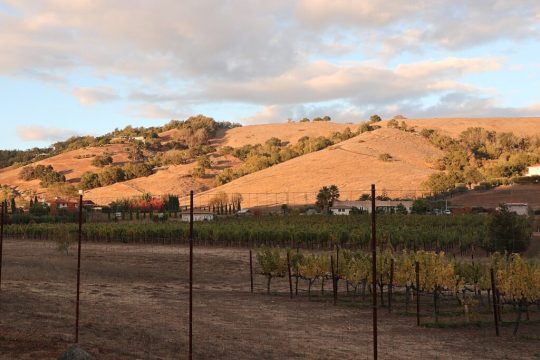
View On WordPress
#General Vallejo#Jack London State Historic Park#Mission San Francisco Solano#Sonoma#Sonoma California#Sonoma Like a Local#Sonoma Mission#Sonoma State Historic Park#Spanish Missions in California#Visit California
0 notes
Photo
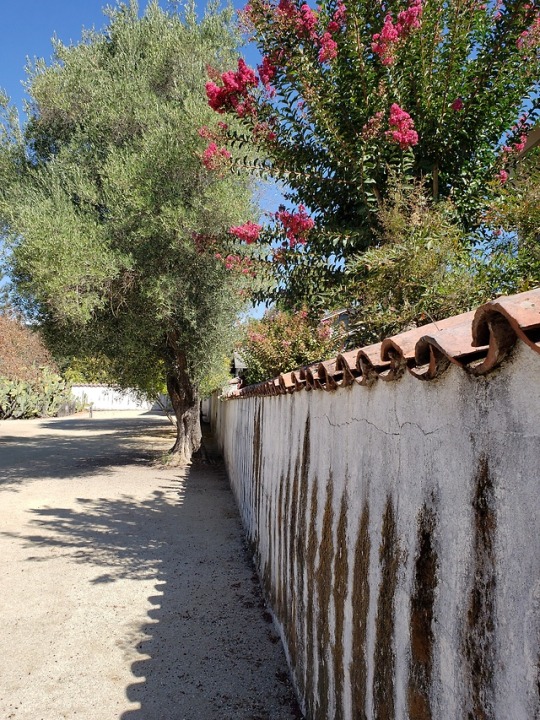
1 note
·
View note
Text
A few photographs from the charming Sonoma Plaza and Mission San Francisco Solano from yesterday



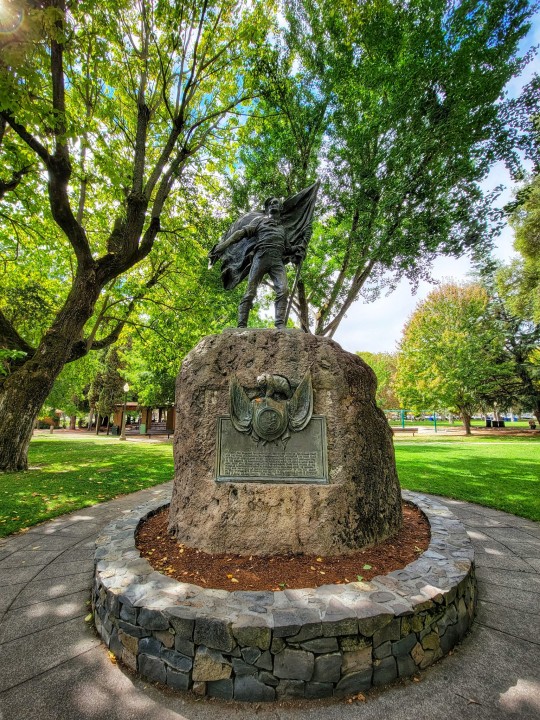

#sonoma plaza#mission san francisco solano#bear flag monument#city hall#california#sonoma state historic park
0 notes
Text
Eldridge Cleaver
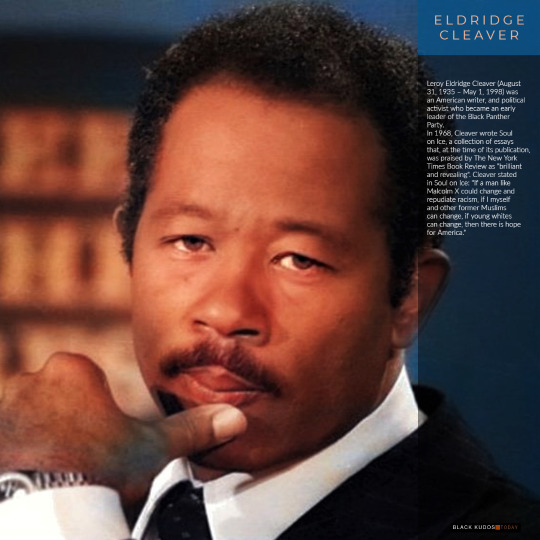
Leroy Eldridge Cleaver (August 31, 1935 – May 1, 1998) was an American writer, and political activist who became an early leader of the Black Panther Party.
In 1968, Cleaver wrote Soul on Ice, a collection of essays that, at the time of its publication, was praised by The New York Times Book Review as "brilliant and revealing". Cleaver stated in Soul on Ice: "If a man like Malcolm X could change and repudiate racism, if I myself and other former Muslims can change, if young whites can change, then there is hope for America."
Cleaver went on to become a prominent member of the Black Panthers, having the titles Minister of Information and Head of the International Section of the Panthers, while a fugitive from the United States criminal justice system in Cuba and Algeria. He became a fugitive after leading an ambush on Oakland police officers, during which two officers were wounded. Cleaver was also wounded during the ambush and Black Panther member Bobby Hutton was killed. As editor of the official Panthers' newspaper, The Black Panther, Cleaver's influence on the direction of the Party was rivaled only by founders Huey P. Newton and Bobby Seale. Cleaver and Newton eventually fell out with each other, resulting in a split that weakened the party.
After spending seven years in exile in Cuba, Algeria, and France, Cleaver returned to the US in 1975, where he became involved in various religious groups (Unification Church and CARP) before finally joining the Church of Jesus Christ of Latter-day Saints, as well as becoming a conservative Republican, appearing at Republican events.
Early life
Eldridge Cleaver was born in Wabbaseka, Arkansas; as a child he moved with his large family to Phoenix and then to Los Angeles. He was the son of Leroy Cleaver and Thelma Hattie Robinson. He had four siblings: Wilhelima Marie, Helen Grace, James Weldon, and Theophilus Henry.
As a teenager, he was involved in petty crime and spent time in youth detention centers. At the age of 18, he was convicted of a felony drug charge (marijuana, a felony at the time) and sent to the adult prison at Soledad. In 1958, he was convicted of rape and assault with intent to murder, and eventually served time in Folsom and San Quentin prisons. While in prison, he was given a copy of The Communist Manifesto. Cleaver was released on parole December 12, 1966, with a discharge date of March 20, 1971. In 1968 he was arrested on violation of parole by association with individual(s) of bad reputation, and control and possession of firearms Cleaver petitioned for habeas corpus to the Solano County Court, and was granted it along with a release of a $50,000 bail.
Black Panther Party
Cleaver was released from prison on December 12, 1966. He was writing for Ramparts magazine and organizing efforts to revitalize the Organization of Afro-American Unity. The Black Panther Party was only two months old. He then joined the Oakland-based Black Panther Party (BPP), serving as Minister of Information, or spokesperson. What initially attracted Cleaver to the Panthers, as opposed to other prominent groups, was their commitment to armed struggle.
In 1967, Cleaver, along with Marvin X, Ed Bullins, and Ethna Wyatt, formed the Black House political/cultural center in San Francisco. Amiri Baraka, Sonia Sanchez, Askia Toure, Sarah Webster Fabio, Art Ensemble of Chicago, Avotcja, Reginald Lockett, Emory Douglas, Samuel Napier, Bobby Hutton, Huey Newton, and Bobby Seale were Black House regulars. The same year, he married Kathleen Neal Cleaver (divorced 1987), with whom he would have son Ahmad Maceo Eldridge (born 1969, Algeria; died 2018, Saudi Arabia) and daughter Joju Younghi (born July 31, 1970, North Korea).
Cleaver was a presidential candidate in 1968 on the ticket of the Peace and Freedom Party. Having been born on August 31, 1935, Cleaver would not have been the requisite 35 years of age until more than a year after Inauguration Day 1969. (Although the Constitution requires that the President be at least 35 years of age, it does not specify whether he need have reached that age at the time of nomination, or election, or inauguration.) Courts in both Hawaii and New York held that he could be excluded from the ballot because he could not possibly meet the Constitutional criteria. Cleaver and his running mate Judith Mage received 36,571 votes (0.05%).
In the aftermath of the assassination of Dr. Martin Luther King Jr. on April 4, 1968, there were riots across the nation. On April 6, Cleaver and 14 other Panthers led an ambush of Oakland police officers, during which two officers were wounded. Cleaver was wounded during the ambush and 17-year-old Black Panther member Bobby Hutton was killed. They were armed with M16 rifles and shotguns. In 1980, he admitted that he had led the Panther group on a deliberate ambush of the police officers, thus provoking the shootout. Some reporters were surprised by this move, because it was in the context of an uncharacteristic speech, in which Cleaver also discredited the Black Panthers, stated "we need police as heroes", and said that he denounced civilian review boards of police shootings for the "bizarre" reason that "it is a rubber stamp for murder". Some speculated his admission could have been a pay-off to the Alameda County justice system, whose judge had only just days earlier let Eldridge Cleaver escape prison time; Cleaver was sentenced to community service after getting charged with three counts of assault against three Oakland police officers. The PBS documentary A Huey Newton Story claims that "Bobby Hutton was shot more than twelve times after he had already surrendered and stripped down to his underwear to prove he was not armed."
Charged with attempted murder after the incident, he jumped bail to flee to Cuba in late 1968. Initially treated with luxury by the Cuban government, the hospitality ended upon reports Fidel Castro had received information of the CIA infiltrating the Black Panther Party. Cleaver then decided to head to Algeria, sending word to his wife to meet him there. Elaine Klein normalized his status by getting him an invitation to attend the Pan-African Cultural festival, rendering him temporarily safe from prosecution. The festival allowed him to network with revolutionaries from all over Africa in order to discuss the perils of white supremacy and colonialism. Cleaver was outspoken in his call to violence against the United States, contributing to his mission to "position the Panthers within the revolutionary nationalist camp inside the United States and as disciples of Fanon on the world stage". Cleaver had set up an international office for the Black Panthers in Algeria. Following Timothy Leary's Weather Underground-assisted prison escape, Leary stayed with Cleaver in Algiers; however, Cleaver placed Leary under "revolutionary arrest" as a counter-revolutionary for promoting drug use.
Cleaver also cultivated an alliance with North Korea in 1969, and BPP publications began reprinting excerpts from Kim Il Sung's writings. Although leftists of the time often looked to Cuba, China, and North Vietnam for inspiration, few had paid any attention to the secretive Pyongyang regime. Bypassing US travel restrictions on North Korea, Cleaver and other BPP members made two visits to the country in 1969–1970 with the idea that the juche model could be adapted to the revolutionary liberation of African-Americans. Taken on an official tour of North Korea, Cleaver expressed admiration at "the DPRK's stable, crime-free society which provided guaranteed food, employment, and housing for all, and which had no economic or social inequalities".
Byron Vaughn Booth (former Panther Deputy Minister of Defense) claimed that, after a trip to the DPRK, Cleaver discovered his wife had been having an affair with Clinton Robert Smith Jr. Booth told the FBI he had witnessed Cleaver shoot and kill Smith with an AK47. Elaine Mokhtefi, in the London Review of Books, writes that Cleaver confessed the murder to her shortly after committing it.
Cleaver later left the DPRK, claiming that the environment was too oppressive.
In his 1978 book Soul on Fire, Cleaver made several claims regarding his exile in Algeria, including that he was supported by regular stipends from the government of North Vietnam, which the United States was then bombing. Cleaver stated that he was followed by other former criminals turned revolutionaries, many of whom (including Booth and Smith) hijacked planes to get to Algeria.
Split and new directions
Eldridge Cleaver and Huey Newton eventually fell out with each other over the necessity of armed struggle as a response to COINTELPRO and other actions by the government against the Black Panthers and other radical groups. Also Cleaver's interest in North Korea and global anti-imperialist struggle drew ire from other BPP members who felt that he was neglecting the needs of African-Americans at home in the US. Following his expulsion from the Black Panthers in 1971, the group's ties with North Korea were quickly forgotten. Cleaver advocated the escalation of armed resistance into urban guerrilla warfare, while Newton suggested the best way to respond was to put down the gun, which he felt alienated the Panthers from the rest of the black community, and focus on more pragmatic reformist activity by lobbying for increased social programs to aid African-American communities and anti-discrimination laws. Cleaver accused Newton of being an Uncle Tom for choosing to cooperate with white interests rather than overthrow them.
Cleaver left Algeria in 1972, moving to Paris, France, becoming a born again Christian during time in isolation living underground. He turned his hand to fashion design; three years later, he released codpiece-revival "virility pants" he called "the Cleavers", enthusing that they would give men "a chance to assert their masculinity".Cleaver returned to the United States in 1977 to face the unresolved attempted murder charge. By September 1978, on bail as those proceedings dragged on, he had incorporated Eldridge Cleaver Ltd, running a factory and West Hollywood shop exploiting his "Cleavers", which he claimed liberated men from "penis binding". He saw no conflict with his newfound Christianity, drawing support for his overtly sexual design from 22 Deuteronomy. The long-outstanding charge was subsequently resolved on a plea bargain reducing it to assault. A sentence of 1,200 hours' community service was imposed.
Later life
In the early 1980s, Cleaver became disillusioned with what he saw as the commercial nature of evangelical Christianity and examined alternatives, including Sun Myung Moon's campus ministry organization CARP. He later led a short-lived revivalist ministry called Eldridge Cleaver Crusades, "a hybrid synthesis of Islam and Christianity he called 'Christlam'", along with an auxiliary called the Guardians of the Sperm.
Cleaver was then later baptized into The Church of Jesus Christ of Latter-day Saints (LDS Church) on December 11, 1983, periodically attended regular services, lectured by invitation at LDS gatherings.
By the 1980s, Cleaver had become a conservative Republican. He appeared at various Republican events and spoke at a California Republican State Central Committee meeting regarding his political transformation. In 1984, he ran for election to the Berkeley City Council but lost. Undaunted, he promoted his candidacy in the Republican Party primary for the 1986 Senate race but was again defeated. The next year, his 20-year marriage to Kathleen Neal Cleaver came to an end.
In 1988, Cleaver was placed on probation for burglary and was briefly jailed later in the year after testing positive for cocaine. He entered drug rehabilitation for a stated crack cocaine addiction two years later, but was arrested for possession by Oakland and Berkeley Police in 1992 and 1994. Shortly after his final arrest, he moved to Southern California, falling into poor health.
Death
Cleaver died at age 62 on May 1, 1998, at Pomona Valley Hospital Medical Center in Pomona, California. He is buried at Mountain View Cemetery in Altadena, California.
Soul on Ice (1968)
[W]hen I considered myself ready enough, I crossed the tracks and sought out white prey. I did this consciously, deliberately, willfully, methodically – though looking back I see that I was in a frantic, wild and completely abandoned frame of mind. Rape was an insurrectionary act. It delighted me that I was defying and trampling upon the white man's law, upon his system of values, and that I was defiling his women...I felt I was getting revenge. From the site of the act of rape, consternation spread outwardly in concentric circles. I wanted to send waves of consternation throughout the white race.
While in prison, he wrote a number of philosophical and political essays, first published in Ramparts magazine and then in book form as Soul on Ice. In the essays, Cleaver traces his own development from a "supermasculine menial" to a radical black liberationist, and his essays became highly influential in the black power movement.
In the most controversial part of the book, Cleaver acknowledges committing acts of rape, stating that he initially raped black women in the ghetto "for practice" and then embarked on the serial rape of white women. He described these crimes as politically inspired, motivated by a genuine conviction that the rape of white women was "an insurrectionary act". When he began writing Soul on Ice, he unequivocally renounced rape and all his previous reasoning about it.
The essays in Soul on Ice are divided into four thematic sections: "Letters from Prison", describing Cleaver's experiences with and thoughts on crime and prisons; "Blood of the Beast", discussing race relations and promoting black liberation ideology; "Prelude to Love – Three Letters", love letters written to Cleaver's attorney, Beverly Axelrod; and "White Woman, Black Man", on gender relations, black masculinity, and sexuality.
2 notes
·
View notes
Text
Casino Gambling Chronicles
Brendan Riley's Solano Chronicles: Indian gambling club question centers around mostly secret boss
A $700 million Indian club plan that would significantly affect Vallejo hasn't stood out as truly newsworthy of late. In any case, advocates are as yet attempting to demonstrate in government court that they reserve an option to push forward with the task - in view of the verifiable ties of a semi-secret Pomo boss to our area. https://yhn678.com
Boss Augustine, whose Pomo name was Shuk, was brought into the world in the mid 1830s close to Clear Lake and as a youngster was brought to Mission San Francisco Solano in Sonoma. By the mid-1840s he was head vaquero for Gen. Mariano Vallejo and his sibling Salvador, crowding cows on tremendous stretches of land that incorporated the future site of the city of Vallejo. Augustine likewise lived in Napa during the 1870s, filling in as a farm hand for Cayetano Juarez.
Numerous different Pomos followed a comparative way during the 1800s, from the Clear Lake region to Sonoma, Napa and surprisingly farther south. That development is critical to the Scotts Valley Band of Pomo Indians, whose attorneys contend it set up a huge verifiable connection to their proposed gambling club and lodging project on ancestral land on the north side of Vallejo. The lawyers likewise delivered a letter from an early-day landowner whining about Pomos living in what's presently Vallejo.
The Pomos' 128-section of land project site is on the flank of Hunters Hill sitting above Vallejo. It's on the upper east side of the bustling Interstate 80-State Route 37 trade - around 10 miles from Chief Augustine's adobe in Napa which was nearby to the as yet standing Cayetano Juarez home.
The case is forthcoming before U.S. Region Judge https://kyb7.com Amy Berman Jackson in Washington, D.C. The Scotts Valley Pomos pursued after the government Bureau of Indian Affairs rejected three years prior to permit the site to become reestablished ancestral terrains for gaming purposes. The BIA said a "critical chronicled association" needed to exist, and Augustine's "hit or miss, presence" in the Vallejo-Napa-Sonoma region doesn't cut it.
Benefactors of the BIA administering incorporate the Yocha Dehe Wintun Nation, which works the Cache Creek resort in Brooks, west of Woodland, and doesn't need a contending Indian gambling club - for this situation one that would be around 60 miles away.
"We sure would like a spot for us to live," Jesse Gonzalez, Scotts Valley Band bad habit executive, student of history and extraordinary incredible extraordinary grandson of Chief Augustine, said in a telephone meet. "We're a governmentally perceived clan however we're landless. We have no spot to call our home despite the fact that we are unique occupants of this area." There are around 300 individuals from the Pomo band now, with generally residing in Lake and Mendocino regions.
Whatever the result of the legitimate debate, Chief Augustine's story merits a retelling. He figured out how to get by as a Pomo chief during a period of slaughter submitted by vigilantes and U.S. Armed force troopers against large number of California Indians.
Between late 1847 and late 1849, Augustine crowded steers for Benjamin and Andrew Kelsey and Charles Stone ashore close to Clear Lake. In his honor winning 2016 book An American Genocide: The United States and the California Indian Catastrophe, writer Benjamin Madley portrayed the Kelsey siblings and Stone as merciless beasts who regularly captured and oppressed Native Americans. Madley said hostages were beaten, starved and shot at for game, and there were murders just as assaults of ladies, including Augustine's better half.
Augustine, considered the https://xyp7.comorginator of plans to kill Stone and Andrew Kelsey, said in a 1880 oral meeting that their maltreatments were deteriorating and more regrettable "and the Indians felt that they should pass on one way as another, so they chose to make the last and deadly stride." Augustine said that Stone, his throat cut, figured out how to run into the primary farm house yet drained to death. Kelsey, shot in the back with a bolt, ran however was gotten by a Pomo who hit him in the head with a stone, killing him. Madley has another rendition: Kelsey ran yet was gotten and held by two men. The mother of a Pomo he had killed then killed him by skewering him in the heart.
Madley composed that the plotters "couldn't imagine the extent of retaliatory mass homicide that killing Stone and Kelsey would incite." The most noticeably terrible response happened in mid-May 1850, as a regiment of the first Dragoons of the U.S. Mounted force, directed by Capt. Nathaniel Lyon and Lt. J.W. Davidson, showed up at Clear Lake. The warriors, joined by Benjamin Kelsey and different vigilantes, jump started a hard and fast assault on caught Pomos who had escaped to an island at the north finish of the lake. A few hundred everyone passed on in what's known as the Bloody Island Massacre. The aggressors had no setbacks.
Armed force Maj. Edwin Allen Sherman went to Clear Lake two months after the slaughter to assist with finding the missing animals of Stone and the Kelsey siblings. A long time later, he said somewhere around 400 Pomo men were killed or suffocated during the assault and an equivalent number of ladies and youngsters kicked the bucket. "Assuming that Sherman's gauge is right, the May 15, 1850, assault might rank among the most deadly of all Native American slaughters throughout the entire existence of the United States and its provincial predecessors," Madley expressed.
Augustine relative Gonzalez said his family accounts of the slaughter are like Maj. Sherman's record. He likewise said Chief Augustine was one of the overcomers of the assault. After his time in Napa during the 1870s, Augustine was back in the Clear Lake region by 1880, functioning as a worker. He stayed a significant Pomo pioneer until his demise in 1903.
- Vallejo and other Solano County people group are mother lodes of California history. The "Solano Chronicles" section, running each and every other Sunday, features different parts of that set of experiences. My source references are accessible upon demand. On the off chance that you have neighborhood stories or photographs to share, email me at [email protected]. You can likewise send any material consideration of the Times-Herald, 420 Virginia St.; or the Vallejo Naval and Historical Museum, 734 Marin St., Vallejo 94590.
MANILA - The Court of Appeals (CA) has excused a request documented by a gambling club administrator against its laborers' association over a debate on the inclusion of their Collective Bargaining Agreement (CBA).
In a seven-page goal composed by Associate Justice Myra V. Garcia Fernandez dated December 28 and as of late distributed on the web, the redrafting court's Eleventh division said it "tracks down no excuse to go amiss from the discoveries" of the work mediator which had disallowed Melco Resorts Leisure (Phils.) Corp. which works the City of Dreams Manila resort and club.
On March 10, 2021, Labor Arbiter Renato Q. Bello requested the organization to concede the particular advantages because of its impacted workers addressed by the Kilusan ng Manggagawang Makabayan (KMM-Katipunan).
The specialists' gathering had started the work grievance for non-installment of CBA benefits asserting that a few representatives were not given advantages because of them under the CBA.
The avoided laborers were those advanced on January 29, 2020, the individuals who have resigned on February 1, 2020, and the people who paid their gaming business licenses, city wellbeing grants, and police clearances in January 2020.
The organization asserted that the CBA ought to be viewed as marked and executed uniquely on February 12, 2020, and that preceding the said date, the prohibited laborers had no vested freedoms.
The specialists' gathering had presented its proposed CBA on April 24, 2019, and the organization and the laborers' gathering finished up and marked the CBA on January 22, 2020.
Delegate and approved signatories of the organization's head working official Kevin Benning met with the specialists' agents on February 12, 2020 to sign the CBA.
The CA maintained the work authority's choice that while the CBA was marked and executed in 2020, the expectation of the gatherings was to give a retroactive impact to its arrangements and that figuring out who are the representatives qualified for its advantages ought to be figured from July 1, 2019, the date of the effectivity of the CBA. The organization then, at that point, took the case to the CA.
In disallowing the organization, the redrafting court said the last option "neglected to set up a reasonable and unquestionable ideal for the issuance of a writ" to stop the authority adding that such a writ would be able "be allowed uniquely notwithstanding genuine and existing considerable privileges". (PNA)
1 note
·
View note
Photo

San Francisco Bay Area Art Events __ 3/7 SF - Leica Store - Maggie Steber - The Secret Garden of Lily LaPalma from 6-8pm on 463 Bush St __ 3/10 SF - Modern Eden - Brianna Angelakis solo show at 801 Greenwich __ 3/10 Oakland - Pt.2 Gallery Muzae Sesay solo exhibition "Domestic Dive" from 12pm to 10pm at 1523b Webster St __ 3/10 Oakland - Good Mother Gallery - Vacancy -2 person show featuring Anika Chasuk and Odysseus Wolken on 408 13th St __ 3/10 Berkeley - Nielsen Arts - The New Mythos -artwork by Raul D'Mauries from 6-10pm on 1537 Solano Ave __ 3/10 - San Jose - Cukui - "Flight of the Spirits" - Group show from 5-9pm to April 11th. 229 Jackson St __ 3/15 SF - Swim - Inaugural show "Monstars" from 6-9pm on 509 Ellis St __ 3/17 SF - Mission Art Gallery - Italian artist Alessio Bolognesi - R-Evolver one night only 6-10pm at 2884 Mission St __ 3/17 SF - The Galallery - All - female group show. 6-9pm __ 3/17 SF - Sirron Norris Cartoon classes 10am - 348 Precita Ave - sign up on his website
#sf street art#street art sf#san francisco street art#street art san francisco#sf bay area artist#sf bay area street art#oakland street art#san jose street art
46 notes
·
View notes
Text
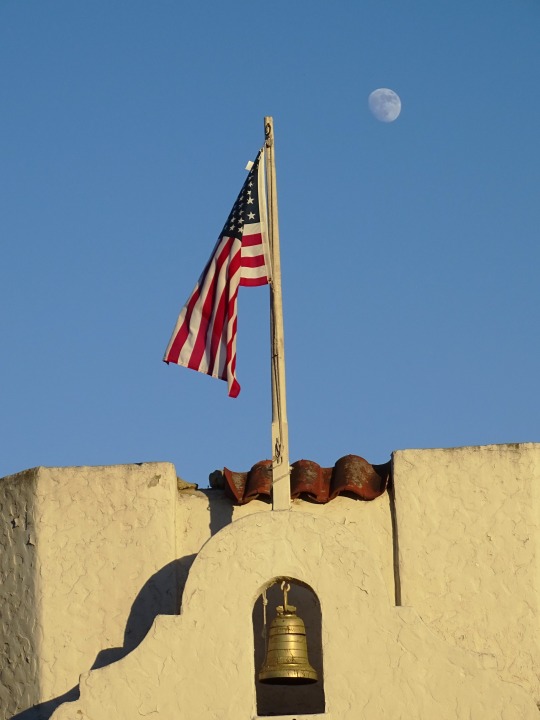
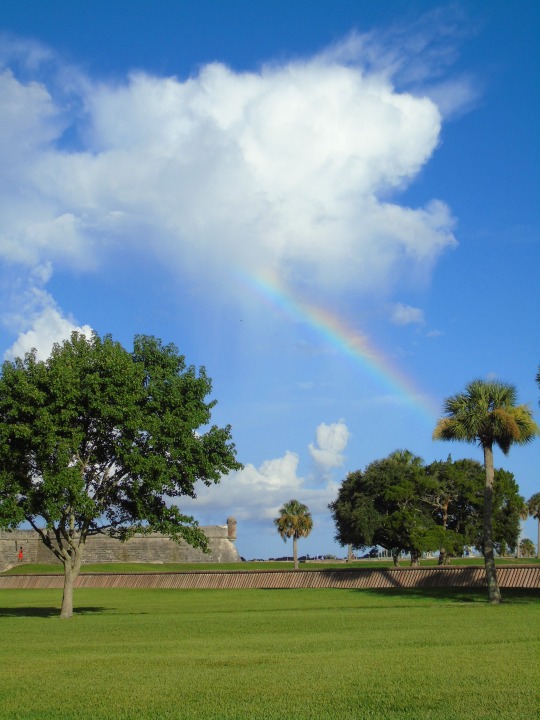
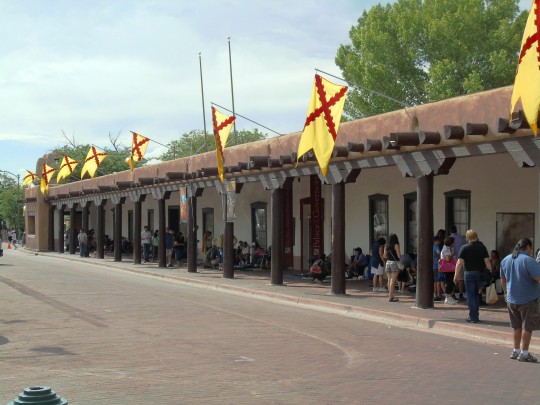
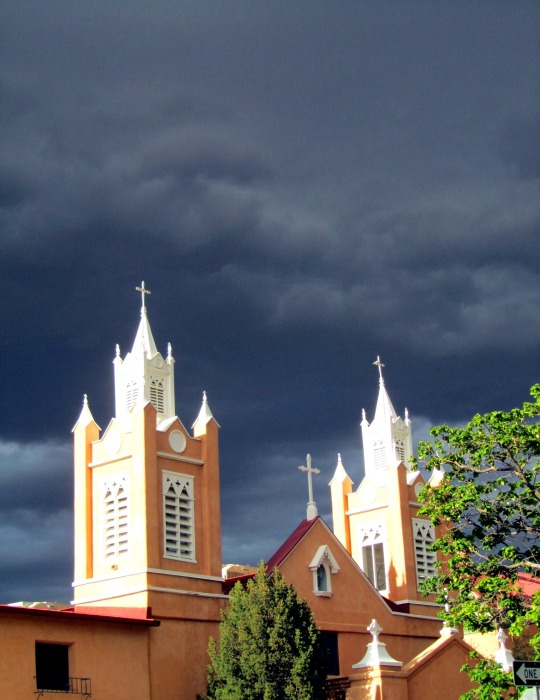
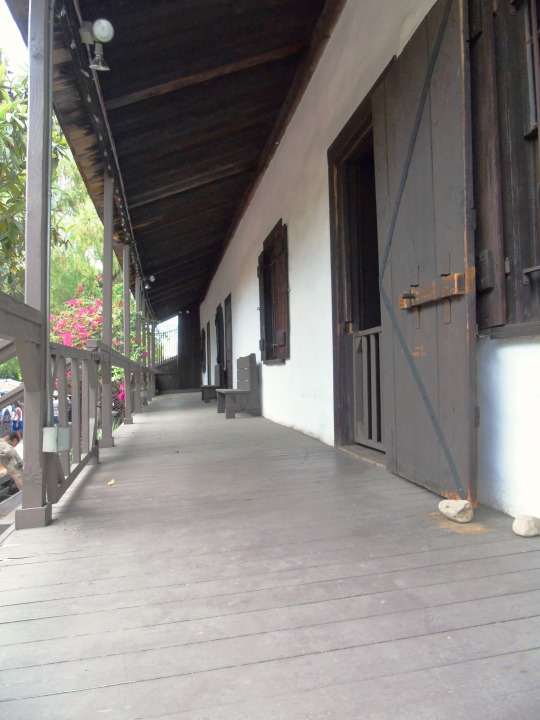

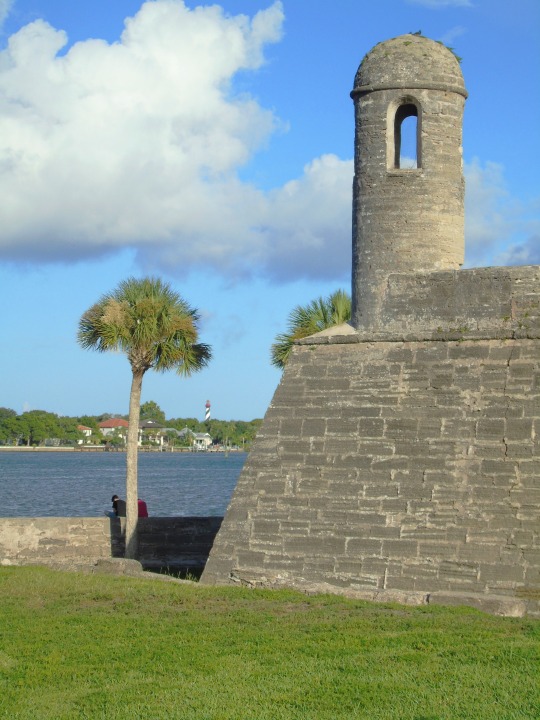
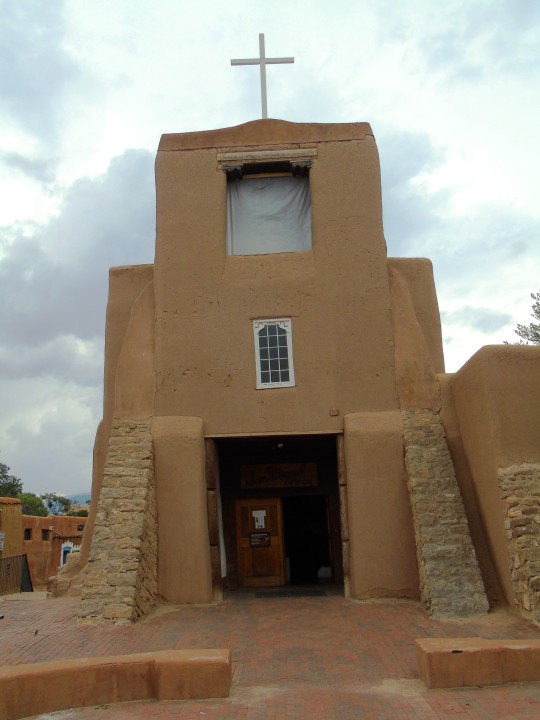
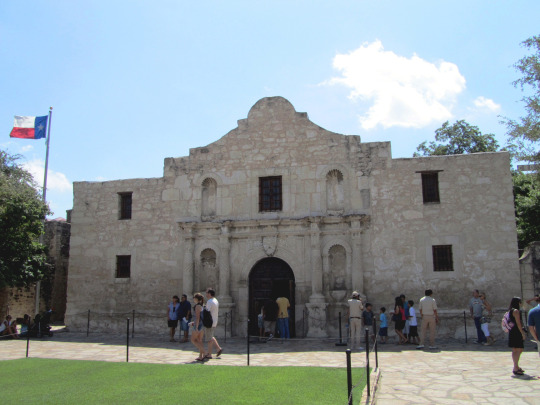
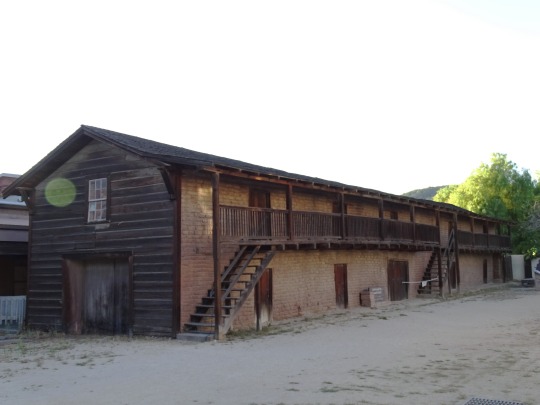
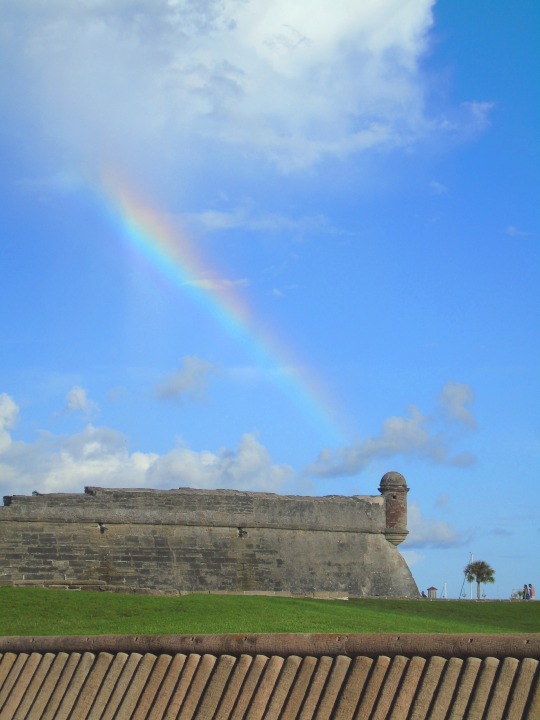
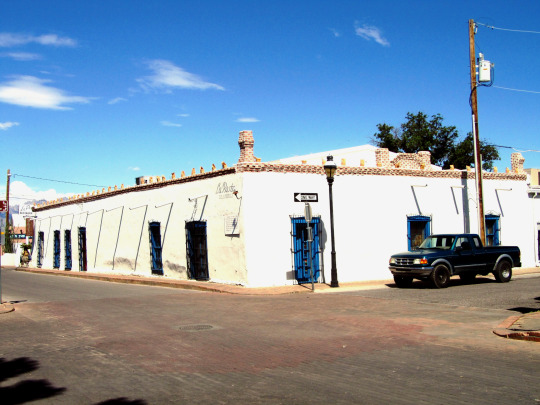


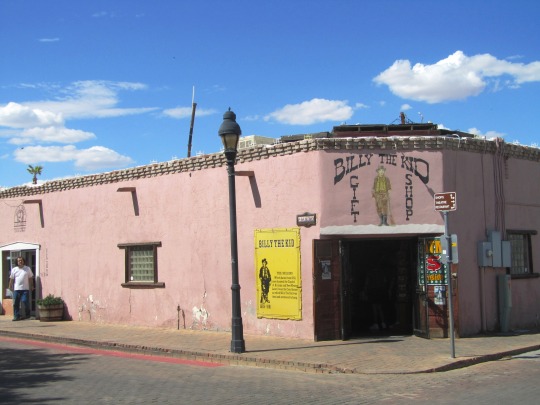
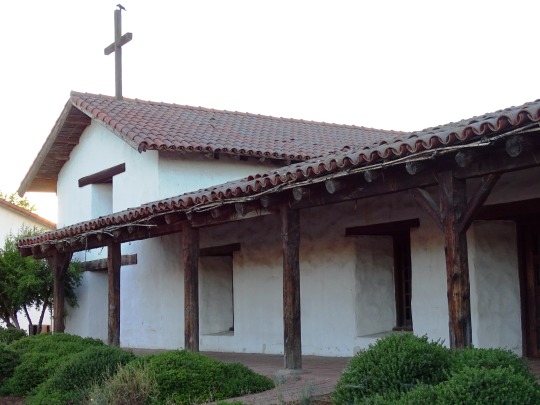
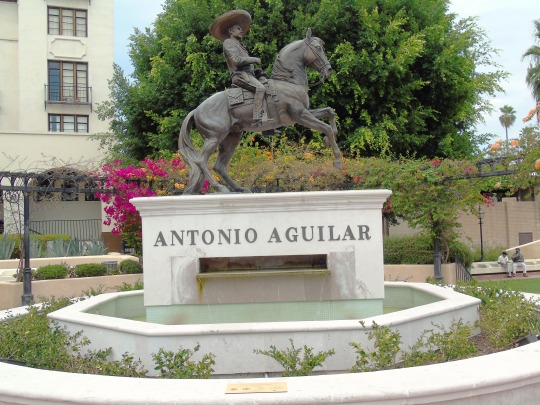
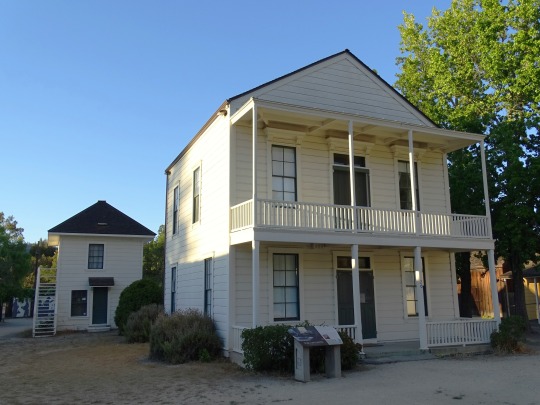
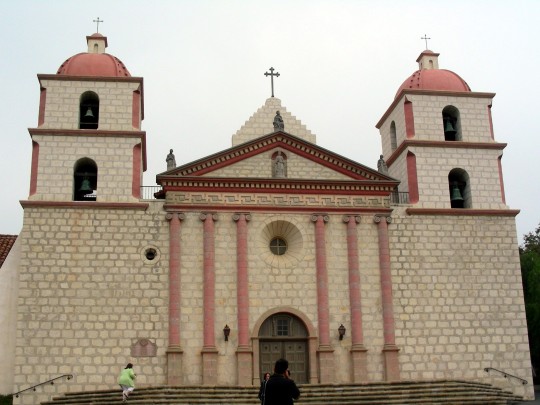

Cinco de Mayo
Cinco de Mayo commemorates the Mexican victory at the Battle of Puebla on May 5, 1862, during the Franco-Mexican War. The day is a minor, regional holiday in Mexico, being mainly celebrated in the state of Puebla where the city of Puebla is the capital. Military parades, speeches, and reenactments of the battle are held there. It is also celebrated in Veracruz and Mexico City, but in many other places of Mexico, May 5th is no different than any other day.
It is more widely celebrated in the United States, where it commemorates the battle, and celebrates Mexican culture and heritage. It is most celebrated in areas with large Mexican-American populations. The day began gaining popularity in the 1940s, during the beginnings of the Chicano movement. Mexican immigrants used the day to show their pride in their Mexican heritage. Awareness of the holiday was further raised in the 1960s by Chicano activists. Today it is celebrated by many in the country, regardless of their ethnic background. Parades, parties, and festivals are part of the day. These events usually include mariachi music, Mexican folk dancing, and traditional Mexican foods. The largest festivals in the country are held in Los Angeles, Chicago, and Houston.
Some have been critical of the day, saying it didn't have more widespread demographic appeal until it began being linked to Mexican alcoholic drinks. Some have also been critical of the day by saying it sometimes perpetuates negative stereotypes of Mexican people. The day has sometimes also been confused with Mexican Independence Day, which commemorates the call to arms against the Spanish, that took place on Sept 16, 1810. That day began being celebrated years before Cinco de Mayo.
The story of the Battle of Puebla deals with Mexico's war with France. In 1861, Benito Juárez became president of Mexico, at a time when the country was in trouble economically. They had defaulted on debts to France, Britain, and Spain, and those countries sent naval forces to Veracruz, Mexico, in an effort to retrieve their money. Britain and Spain worked out an agreement and withdrew. But France stayed, in an effort to seize back their money, and to create a French Empire in Mexican territory. France also wanted to limit the influence of the United States in the region. Although, during this time, the United States was preoccupied with the Civil War, giving France more of an opportunity to do as it pleased.
In late 1861, French forces landed at Veracruz and put Juárez and his government on the run. 6,000 French troops, under General Charles Latrille de Lorencez, planned an attack at Puebla de Los Ángeles, a town 80 miles southeast of Mexico City, and were optimistic about its outcome. Juárez was stationed just north of there and sent 2,000 (by some accounts 4,000) men to Puebla. Poorly supplied and outnumbered, they were led by General Ignacio Zaragoza. They fortified the town and got ready for French.
On May 5, 1862, the French attacked the town, and the battle lasted from morning until night. They lost between 500 to 1,000 soldiers, while Mexico lost less than 100. After the battle ended, the French retreated to the Gulf Coast. It was not a strategic win for Mexico but was a symbolic victory and morale booster. General Zaragoza died a few months later, and the town was renamed Puebla de Zaragoza. France's leader, Napoleon III, the nephew of Napoleon Bonaparte, installed Austrian Archduke Ferdinand Maximilian as emperor of Mexico in 1864. He was executed by Juárez's forces in 1867. France withdrew from Mexico the same year.
How to Observe
One way to celebrate the day is to eat traditional Mexican foods, or foods associated with Mexico, such as tacos, burritos, sopes, enchiladas, grilled corn, chips with salsa verde or guacamole, or mole poblano, which is an important food in Puebla. You could wash it all down with some margaritas. Mexican mariachi music or other Mexican music could be listened to, or you could do some Mexican folk dancing. Food, music, and dancing will likely be a part of any Cinco de Mayo festival or event, so it may be best to attend one! You could attend Los Angeles's Festival de Fiesta Broadway, the largest Cinco de Mayo event in the world (note: this Cinco de Mayo celebration is held in late April). Chicago and Houston are also known for large events. San Diego has various events, including a battle reenactment. The Cinco de Mayo festival in Chandler, Arizona, is known for its Chihuahua parades, races, and pageants. There are many smaller events taking place in cities and towns across the United States. Check to see what is taking place near where you live. In Puebla, there is a museum dedicated to the battle, and the battlefield is a park. A reenactment, replete with rifle and cannon shots, takes place in Puebla on the day, and it ends with a sword fight between the Mexican and French generals. No matter how you celebrate the day, make sure you are being culturally sensitive if you are not of Mexican or Mexican-American descent.
Source
#Sonoma State Historic Park#Mission San Francisco Solano#Cinco de Mayo#CincoDeMayo#AnniversaryOfTheBattleOfPuebla#5 May#Palace of the Governors#Santa Fe#architecture#cityscape#USA#travel#summer vacation#original photography#Old Town San Diego State Historic Park#El Pueblo de Los Angeles Historical Monument#2014#Avila Adobe#the Alamo#Texas#Casa de Estudillo#San Antonio#La Posta DeMesilla#tiles#ristra#Castillo de San Marcos National Monument#St. Augustine#Mission Santa Barbara#San Felipe de Neri Church#Albuquerque
2 notes
·
View notes
Text

Saint Junipero Serra
In 1776, when the American Revolution was beginning in the east, another part of the future United States was being born in California. That year a gray-robed Franciscan founded Mission San Juan Capistrano, now famous for its annually returning swallows. San Juan was the seventh of nine missions established under the direction of this indomitable Spaniard.
Born on Spain’s island of Mallorca, Serra entered the Franciscan Order taking the name of Saint Francis’ childlike companion, Brother Juniper. Until he was 35, he spent most of his time in the classroom—first as a student of theology and then as a professor. He also became famous for his preaching. Suddenly he gave it all up and followed the yearning that had begun years before when he heard about the missionary work of Saint Francis Solano in South America. Junipero’s desire was to convert native peoples in the New World.
Arriving by ship at Vera Cruz, Mexico, he and a companion walked the 250 miles to Mexico City. On the way Junipero’s left leg became infected by an insect bite and would remain a cross—sometimes life-threatening—for the rest of his life. For 18 years, he worked in central Mexico and in the Baja Peninsula. He became president of the missions there.
Enter politics: the threat of a Russian invasion south from Alaska. Charles III of Spain ordered an expedition to beat Russia to the territory. So the last two conquistadors—one military, one spiritual—began their quest. José de Galvez persuaded Junipero to set out with him for present-day Monterey, California. The first mission founded after the 900-mile journey north was San Diego in 1769. That year a shortage of food almost canceled the expedition. Vowing to stay with the local people, Junipero and another friar began a novena in preparation for St. Joseph’s day, March 19, the scheduled day of departure. On that day, the relief ship arrived.
Other missions followed: Monterey/Carmel (1770); San Antonio and San Gabriel (1771); San Luís Obispo (1772); San Francisco and San Juan Capistrano (1776); Santa Clara (1777); San Buenaventura (1782). Twelve more were founded after Serra’s death.
Junipero made the long trip to Mexico City to settle great differences with the military commander. He arrived at the point of death. The outcome was substantially what Junipero sought: the famous “Regulation” protecting the Indians and the missions. It was the basis for the first significant legislation in California, a “Bill of Rights” for Native Americans.
Junipero’s missionary life was a long battle with cold and hunger, with unsympathetic military commanders and even with danger of death from non-Christian native peoples. Through it all his unquenchable zeal was fed by prayer each night, often from midnight till dawn. He baptized over 6,000 people and confirmed 5,000. His travels would have circled the globe. He brought the Native Americans not only the gift of faith but also a decent standard of living. He won their love, as witnessed especially by their grief at his death. He is buried at Mission San Carlo Borromeo, Carmel, and was beatified in 1988. Pope Francis canonized him in Washington, D.C., on September 23, 2015.
13 notes
·
View notes
Photo
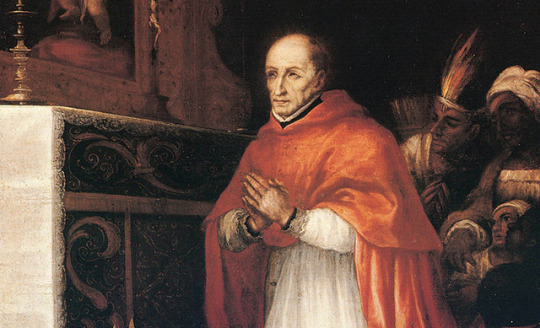
Saint of the Day – 23 March – St Turibius of Mogrovejo (1538-1606) ArchBishop, Lawyer, Professor, Missionary, Preacher, Reformer, Professor, – born Toribio Alfonso de Mogrovejo in 1538 at Mayorga de Campos, Leon, Spain and died on 23 May 1606 at Santa, Peru of natural causes. Patronages – Peru, Lima, Latin American bishops, Native rights, Scouts, Valladolid. St Turibius predicted the exact date and hour he would die, which would come to pass. His reputation for holiness and learning was never forgotten for it led to calls for his canonisation. ,,Pope Innocent XI beatified the late archbishop but Pope Benedict XIII was the one to canonise him as a saint on 10 December 1726.
Toribio Alfonso de Mogrovejo was born on 16 November 1538 in the Valladolid province in Habsburg Spain to the nobles Luis Alfonso de Mogrovejo (1510–1568) and Ana de Roblès i Morán (1515–???); He was named in honour of Saint Toribio.
He was noted as a pious child with a strong devotion to the Blessed Virgin who fasted once a week in her honour and recited rosaries often. He received an education befitting for a noble at the time; he entered the college at Valladolid in 1550 where he studied humanities. He became a professor teaching law to students at the reputed college in Salamanca. His uncle Juan de Mogrovejo served as a professor there as well as at the San Salvador High School in Oviedo before King Juan III invited him to teach at the college in Coimbra. Toribio accompanied his uncle there and studied at the college in Coimbra before returning to Salamanca sometime later. His uncle died not long after he returned to Salamanca for his studies. His learning and virtuous reputation led to King Philip II appointing him as the Grand Inquisitor on the Inquisition Court stationed at Granada in February 1571. He remained in that position until 1576 but not without impressing the king with his work.
During this time Philip II nominated him for the vacant Lima archbishopric despite his strong protests. He used his knowledge of canon law to remind him and the pope that priests alone could be designated with ecclesial dignities but the pope overruled him. Preparations were made for him to be ordained before the formal announcement could be made. He was ordained to the priesthood in 1578 in Granada (after four consecutive weeks of receiving the minor orders) and Pope Gregory XIII named him on 16 May 1579 as the Archbishop of Lima; he received his episcopal consecration in August 1580 from the Archbishop of Seville Cristóbal Rojas Sandoval. In September 1580 he departed for Peru alongside his sister and her husband.

The new archbishop first arrived in Paita on 12 May 1581 which was 600 miles – or 970 kilometers – from Lima. He began his new mission travelling to Lima on foot while he baptised and taught the natives. He was enthroned in his new see a week later. His favourite topic was: “Time is not our own and we must give a strict account of it”. He traversed his entire archdiocese three times on foot and alone; exposed to tempests and torrents as well as the wild beasts and tropical heat. He also had to deal with fevers and often threats from hostile tribes. He countered these all the while baptising and confirming almost one half million people which included the future Saint Rose and Saint Martin de Porres and also Saint Francis Solano (who later became a close friend) and Blessed Juan Masías.
He built roads and schoolhouses as well as chapels and hospitals; he never forgot about the religious and established convents for them to live in. In 1591 founded the first seminary in the western hemisphere and mandated that learning indigenous languages was a prerequisite in their formation. He inaugurated the first part of the third Lima Cathedral on 2 February 1604. He also assembled thirteen diocesan synods and three provincial councils during his tenure. He was seen as a champion of the rights of the natives against the Spanish masters. He learnt the local dialects for better communication with the native people and his own flock and was seen as a champion for rights and liberties despite Peruvian governors voicing opposition to him since he challenged their power and control.

Mogrovejo sought the reformation of diocesan priests and found that some of their behaviour had grown too scandalous to be continued. There were those priests who came to resent him for this though Francisco de Toledo supported his reform efforts and rendered assistance to the archbishop in that regard. He also oversaw the Third Provincial Council from 1582 to 1583 which Philip II had requested he oversee. He served as the council’s president but guided it rather than lead it; he involved himself in drafting important concilliar documents. Mogrovejo also worked to implement the decrees from the Council of Trent and made evangelisation a core theme in his episcopal career. He produced a trilingual catechism in Spanish as well as in the native languages Quechua and Aymara in 1584 while the council mandated confessional manuals to aid confessors while calling for preaching in indigenous languages. The council issued a decree from the council – one he endorsed – that proscribed excommunication to those clerics who engaged in business ventures since it was known that there were some clerics who exploited the natives for work and profit.
The council ended and Pope Sixtus V confirmed its decrees in 1588. He held two more provincial councils in 1591 and in 1601. Mogrovejo made three pastoral visitations that were all extensive in time. He visited each parish and would first inspect all objects for divine worship (he expected them to be in good condition) before talking to the parish priest about the life of the parish. He would then check the parish registers and then checked to see if the priest had the missal that Pope Pius V had mandated over a decade prior.
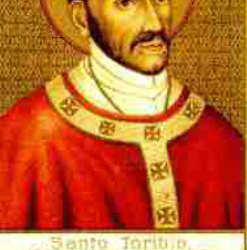
His prediction of the exact date and hour of his death, would soon come to pass. It was in Pacasmayo during a pastoral visit that he contracted a fever but continued labouring to the last and arrived at Saña in a critical condition. He dragged himself to receive the Viaticum and died not long after this on 23 March 1606 (Holy Thursday) at 3:30pm at the Saint Augustine convent. His final words were those of Jesus Christ on the Cross: “Lord, into Thy hands I commend my spirit”. His remains are interred in the archdiocesan cathedral.
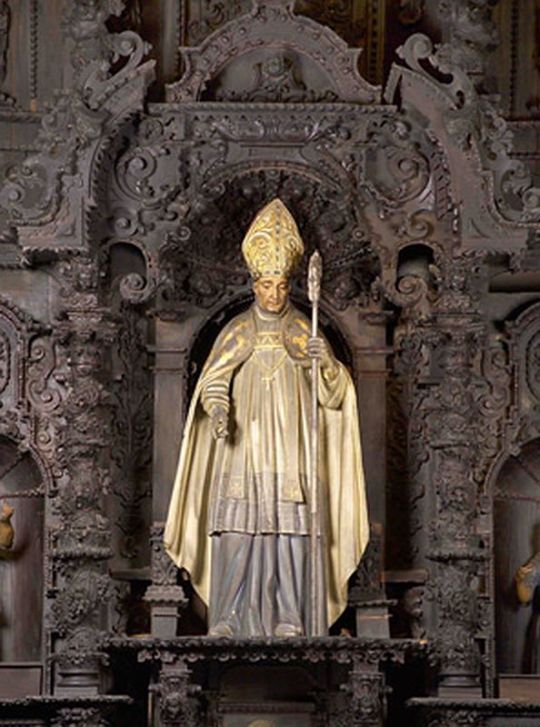
His beatification was celebrated under Pope Innocent XI in 1679 (ratified in the papal bull “Laudeamus”) and Pope Benedict XIII later canonised him as a saint on 10 December 1726 through the papal bull “Quoniam Spiritus”. His liturgical feast was once celebrated on 27 April but is now celebrated on 23 March. His cult was once confined for the most part to South America but is now universal because of his pioneering reforms. He became the patron saint for the Latin American episcopate after Pope John Paul II proclaimed him as such in 1983.
Cardinal Juan Luis Cipriani Thorne spoke on Mogrovejo as a tireless pastor who never tired “being close to God” whose “love for the poor manifested itself in the innumerable gestures” that marked his episcopal life. Thorne further elaborated that “in Saint Toribio we reinforce our conviction that the time devoted to God is a guarantee of a faithful dedication to the fulfilment of our duties and to the service of our brothers”.
(via AnaStpaul – Breathing Catholic)
26 notes
·
View notes
Text
California Missions, Part 9
California Missions, Part 9
San Rafael with its three bells
Today I have an image of each of the three missions featured in Wednesday’s post, San Francisco de Asis, San Rafael Arcangel, and San Francisco Solano. Although I’ve never visited them, these three missions have been more interesting to me, partly because they are all in Northern California.
San Francisco de Asis
San Francisco de Asis (Mission Dolores) in 1856
San…

View On WordPress
0 notes
Photo
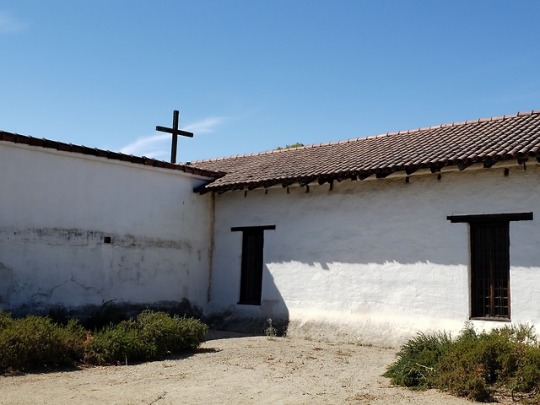
La Cruz
0 notes
Text
here is a list of spanish missions in california- i have created hashtags for this blog because each mission will be a location in a game
Mission San Francisco Solano #solano
Mission San Rafael Arcángel #rafael
Mission San Francisco de Asís (Mission Dolores) #dolores
Mission San José #josé
Mission Santa Clara de Asís #clara
Mission Santa Cruz #cruz
Mission San Juan Bautista #bautista
Mission San Carlos Borromeo de Carmelo #carlos
Mission Nuestra Señora de la Soledad #señora
Mission San Antonio de Padua #antonio
Mission San Miguel Arcángel #miguel
Mission San Luis Obispo de Tolosa #tolosa
Mission La Purísima Concepción #purísima
Mission Santa Inés #inés
Mission Santa Barbara #barbara
Mission San Buenaventura #buenaventura
Mission San Fernando Rey de España #fernando
Mission San Gabriel #gabriel
Mission San Juan Capistrano #capistrano
Mission San Luis Rey de Francia #francia
Mission San Diego de Alcalá #diego
#solano#rafael#dolores#josé#clara#cruz#bautista#carlos#señora#antonio#miguel#tolosa#purísima#inés#barbara#buenaventura#fernando#gabriel#capistrano#francia#diego
0 notes
Link
In this context, good news means the disaster won’t get a lot more horrible, just maybe a little bit more horrible. That’s the perversity we’re facing all over the country, in various times, and under differing circumstances. The Gulf Coast is facing the same: Tropical Storm Marco got weaker, so Louisiana and Texas will be spared from two hurricanes. Now they have to endure just one tropical storm and one hurricane (Hurricane Laura). Just make the awful less awful, and we can feel better.
Excerpt from this story from the LA Times:
As two of the three largest fires in California history burned simultaneously in the Santa Cruz Mountains and in wine country north of San Francisco Bay, firefighters saw a welcome respite in dangerous fire weather with the cancellation of a red-flag warning for the Bay Area.
Forecasters, however, continued to warn about dry lightning in the Sacramento Valley’s foothills and mountains through Monday evening. Red-flag warnings — which indicate that dangerous fire weather conditions are expected — were also in effect for parts of the North Coast, northeast California and the Tahoe Basin through Monday evening.
The National Weather Service initially issued warnings covering large swaths of Northern and Central California through Monday afternoon. With firefighters already responding to more than two dozen major fires, it was feared the storms could ignite even more blazes and cause existing ones to spread more rapidly, pushing crews into a triage situation.
The sheer magnitude of what has already burned is sobering: about 1.4 million acres this month alone, with four more months of potential fire season to go. Only 2018 saw more land scorched in California — over an entire year.
Across California, “over 14,000 firefighters are on the front lines of more than two dozen major fires and lightning complexes,” or groups of fires, Jeremy Rahn, Cal Fire public information officer, said at a Sunday media briefing.
There have been more than 13,000 lightning strikes statewide since Aug. 15, he added on Monday, and “an astonishing 2,700 more wildfires have occurred this year than last.”
Crews are currently battling 625 fires throughout the state, according to Newsom. So far this year, firefighters have responded to 7,002 fires that have scorched a combined 1.4 million acres, the governor said.
Seven people have died so far in this year’s fires, including five — three in Napa County and two in Solano County — as a result of the LNU Lightning Complex fire, and one in the CZU Lightning Complex fire. The death toll also includes a pilot who died in a helicopter crash in Fresno County while on a water-dropping mission for the Hills fire.
The LNU Lightning Complex fire, at nearly 350,000 acres, is the second-largest fire in California history. With slightly less acreage burned — over 347,000 acres — the SCU Lightning Complex fire is the next largest. Combined, they dwarf the Thomas fire, which at 281,893 acres shattered the records just three years ago.
As of Monday morning, the LNU fire complex, which was burning in Napa, Sonoma, Lake, Solano, Yolo and Colusa counties, had destroyed 871 homes and other buildings and was 22% contained.
The SCU Lightning Complex fire, which is now more than 47,000 acres and spans seven counties, began as a collection of about 20 blazes in areas of Contra Costa, Alameda, Santa Clara, Stanislaus and San Joaquin counties and by Sunday had merged into two conflagrations.
The fires, which were 10% contained as of Monday afternoon, were burning primarily through grass and brush in steep, remote areas that hadn’t burned in years.
0 notes